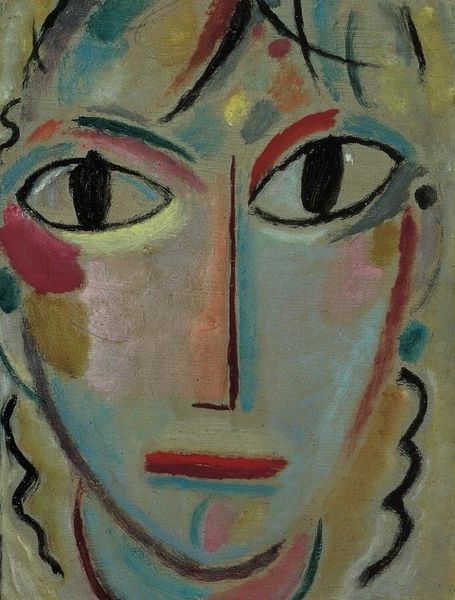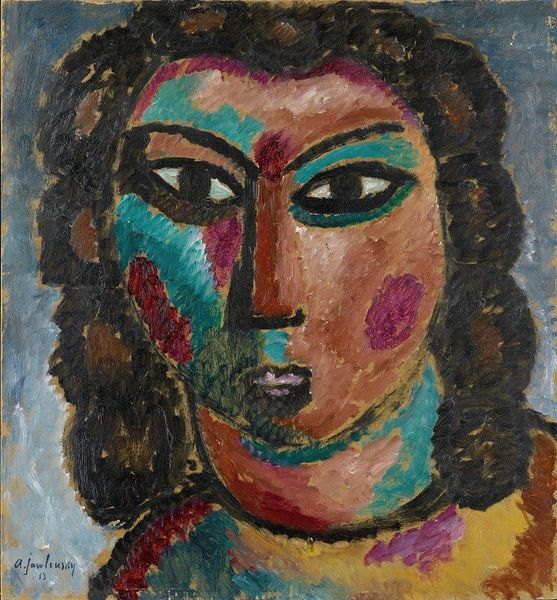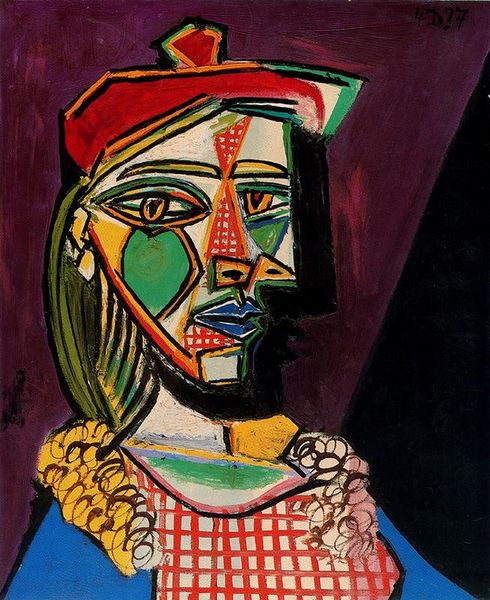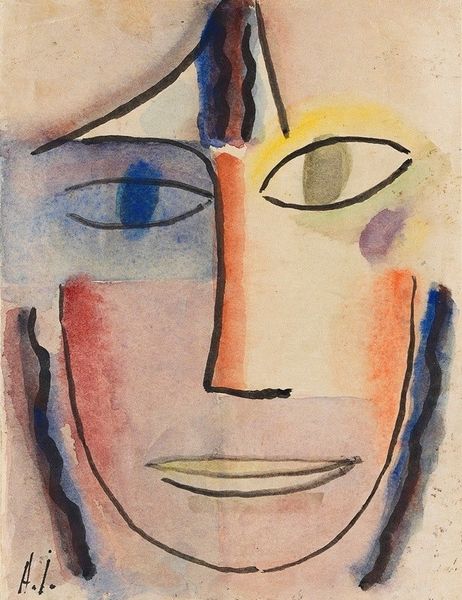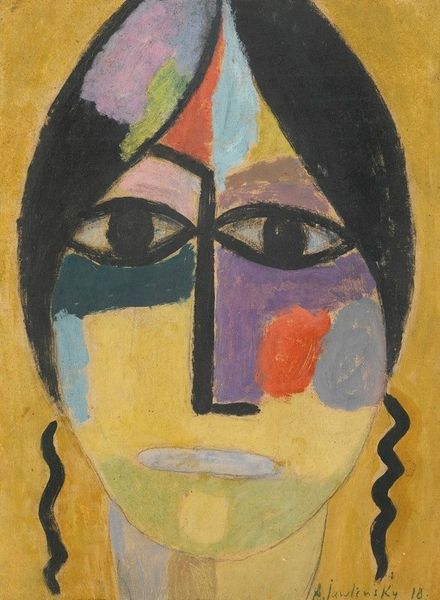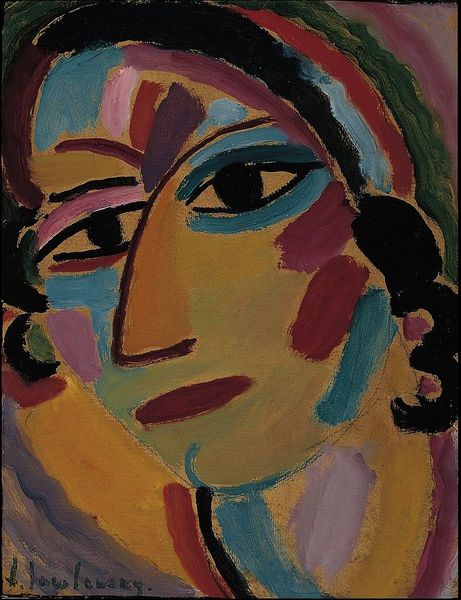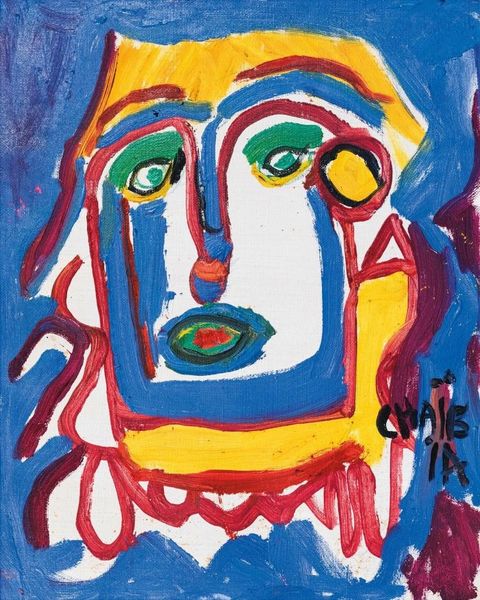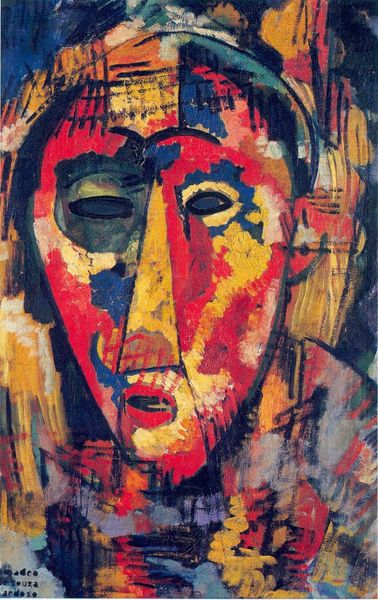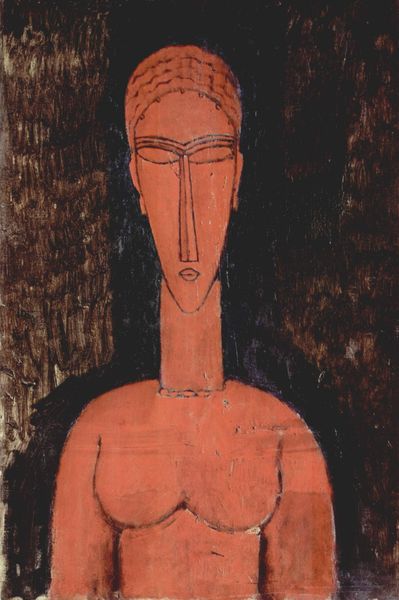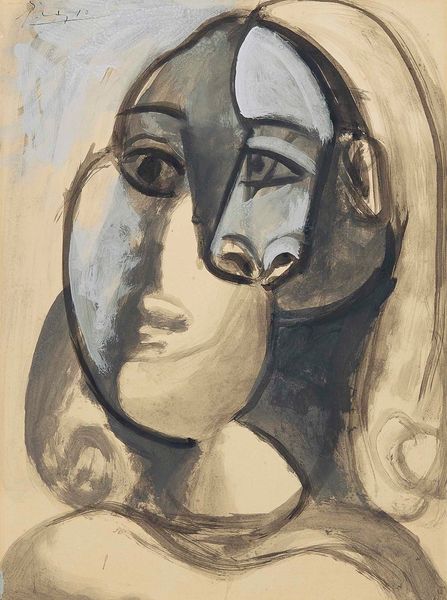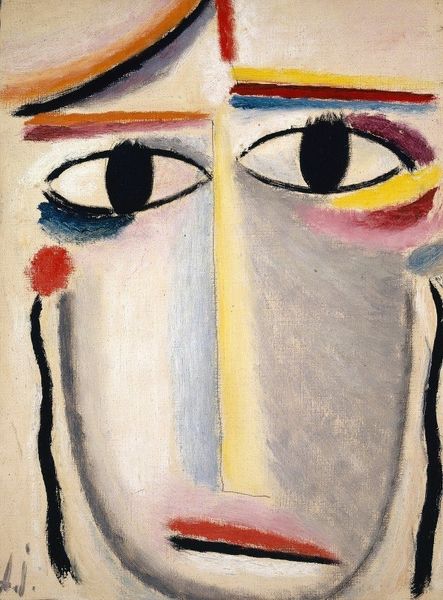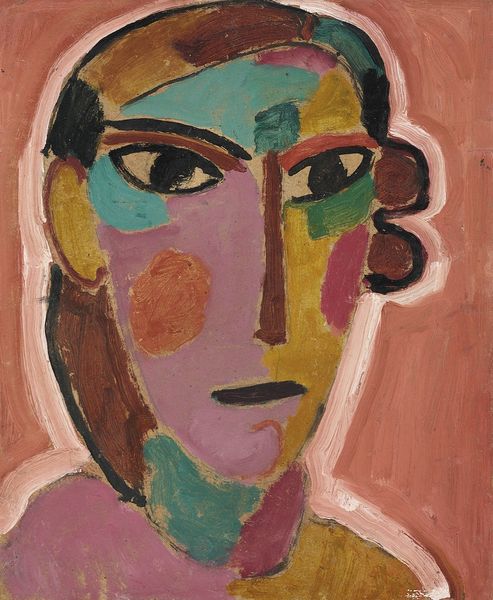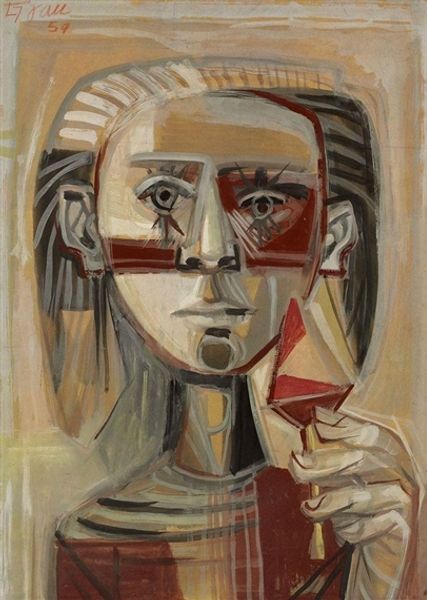
Copyright: Modern Artists: Artvee
Curator: Right, let’s take a look at Picasso’s “Head of a Woman No. 5, Portrait of Dora Maar,” painted in 1939 using oil paint. Dora Maar was, of course, a very influential figure in Picasso's life, acting as his muse and also a creative force in her own right. Editor: Immediately, the conflicting planes and the sheer gaze just throws me! There’s such an unsettling beauty in the geometric, fragmented form. Picasso splits her face in a way that kind of mirrors the tension brewing in Europe then, just before the war exploded. Curator: Yes, that duality is key. We see Cubism pushed further, right? Picasso's portraits weren't about mimetic representation; they were about showing different viewpoints and emotional depths simultaneously, responding directly to the cultural disruption around him. This wasn’t just about depicting a person, but the many sides of one personality, of a human. Editor: Exactly! It feels like seeing a soul disassembled and reassembled. Those colors—the stark yellows, reds, and blues—they shout, almost violently. It's like a beautiful explosion. You can see Dora’s influence as a surrealist photographer coming through, too, almost like a manipulated collage of identity. And her eyes, the way they're looking in different directions makes the entire work intensely visceral, and you almost get this feeling that something terrible might happen to you any moment. Curator: And of course, the distorted form can be viewed in connection with political unrest. The Second World War led to an exile of various modernist artistic expressions and that period witnessed art grappling with a world moving towards the brink of catastrophe. Editor: It makes you think, doesn’t it? About how we perceive and portray the complexities of being human, particularly in tumultuous times. Makes my usual self-portraits feel so… simple. Curator: I agree entirely. Considering the backdrop of that moment, it highlights the ability of the creative space to mirror a multi-faceted individual while commenting on a fragmented society. Editor: Right. This artwork really is like history rendered through broken glass, a shattered, beautiful, poignant reflection.
Comments
No comments
Be the first to comment and join the conversation on the ultimate creative platform.
